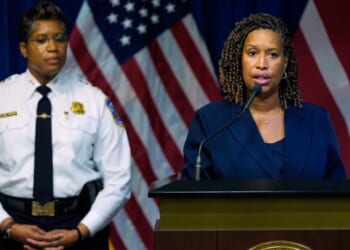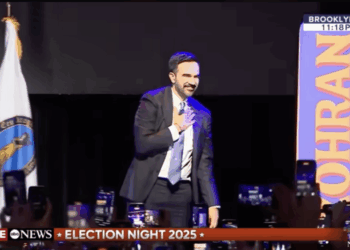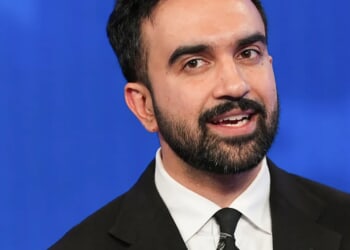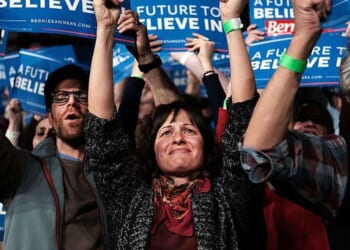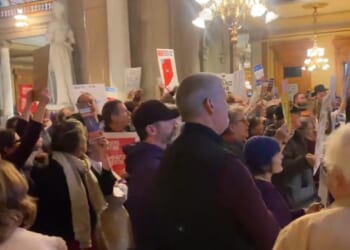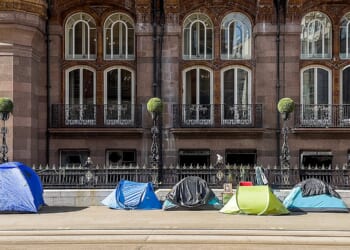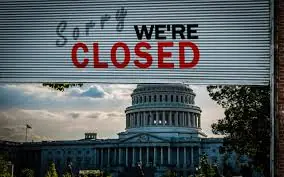
[Order Michael Finch’s new book, A Time to Stand: HERE. Prof. Jason Hill calls it “an aesthetic and political tour de force.”]
Bipartisanship in D.C. means a mutual agreement by both parties to spend as much money and go as deep into debt as possible to fund each other’s mutually opposing legislative priorities.
That is how you get to a national debt that is currently at $37 trillion or more money than the current GDP. We didn’t hit unsustainable debt levels because only one party couldn’t stop spending money but because both parties, behind the theater, wouldn’t stop spending money.
That’s why bipartisanship was the single biggest driver of our out-of-control spending. If only the majority party had fiscal dominance at a time, we would still have less spending than we do now, but as long as the minority party could force a government shutdown if it didn’t get its spending priorities in, then no matter which party won, we would be spending twice as much.
The only way to challenge that status quo was with a government shutdown. But Republicans refused to use shutdowns when they were in the minority and panickedly surrendered to them when they were in the majority, living in terror that they would be blamed for a shutdown.
We are now in the third week of a government shutdown that Republicans are being blamed for.
And it’s okay.
While Obama infamously dispatched the National Park Service to rope off otherwise publicly accessible monuments and to harass elderly hikers in national parks and warn people passing through parks not to take pictures “because the government is shut down” to make Americans suffer, the Trump administration showed that we can have a mostly painless gov shutdown.
Anything urgent enough will keep functioning and 99% of the government isn’t urgent or functional anyway. The media will ensure that Republicans will be blamed for the shutdown (or for anything that the narrative memo from the Democrats to the media commands they be blamed for this week) but when the public doesn’t feel it affects them, it won’t really matter.
Democrats dramatically overestimate how much the average American outside Northern Virginia cares about the functioning of the Federal government. And here’s what at stake.
Dems proposed a $1.5 trillion ‘clean’ spending resolution to a 4 week funding bill. Very few things that amount to $1.5 trillion are clean and certainly a bill laden with over $300 million in security spending for Congress, health care for illegal aliens, and free lawyers for criminals is very dirty indeed.
But even if that $1.5 trillion were all going to buy milk for nursing mothers (as House Dems would have you believe), it’s symptomatic of an out-of-control spending spree that won’t stop until it’s made to stop.
Can we afford to add $1.5 trillion to the national debt?
Maya MacGuineas, a former Washington Post editorial board member and part of a liberal think tank, who currently serves as the president of the non-partisan Committee for a Responsible Federal Budget warned that “the national debt is already approaching record levels as a share of the economy, and we’re on course to spend $1 trillion this year just on interest.”
That is not going to change without direct pressure on Congress to control spending.
Efforts by groups like the Committee for a Responsible Federal Budget to alert the public to the imminent threat of the national debt failed to achieve any real meaningful change. While the public agrees that the national debt is a problem, it has no way to force action by Congress. Normalizing shutdowns gives the majority party the ability to at least limit spending by the minority party and takes away the terror of what had been a negotiating nuclear weapon.
Disrupting the status quo is the only option when the status quo is leading us to a financial apocalypse. While both parties blame each other for the shutdown, now that the Republicans have learned to play the Democrat game and accuse them of also wanting to push granny off a cliff and starve children, what really matters is that we have reached a point where shutting down the government to curtail spending is no longer seen as a political red line in D.C.
Up until now, it was seen as more politically acceptable to be approaching a $40 trillion national debt than to stop spending money.. Back in 2020, the national debt was at $26 trillion. It’s now $11 trillion higher. That’s more than the entire national debt during the subprime mortgage crisis. It’s just $2 trillion short of the total national debt that triggered the Tea Party movement.
And that’s backward.
The most frightening thing shouldn’t be a government shutdown, it should be the debt.
Now that the shutdown shakedown is losing its power, the bipartisan spending that is driving national debt to record levels has lost the fuel that was burning through our country and our future. The average American has a debt share of over $100,000 and it’s not getting any better.
“Government is simply the name we give to the things we choose to do together,” Rep. Barney Frank, whose prostitute aide ran a male brothel from his Capitol Hill home, once observed.
That slogan was taken up by socialists like Barack Obama and Elizabeth Warren to justify endless government spending. But nobody chose to go $37 trillion into debt. Congress chose to go into debt because its only power is bribing each other with our grandchildren’s money.
Government shutdowns provide an alternative to bipartisan bribery that may also be the only pathway to at least slowing down the runaway national debt express we’ve been trapped on.
If we can stop choosing to bankrupt our country together, maybe we can have a future.

